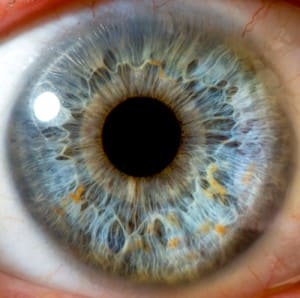 Topography-Guided Laser Vision Correction is a state-of-the-art new technology designed to optimize the surface of the eye’s cornea so that the quality of vision after LASIK laser eye surgery is the best it can possibly be. Gordon Schanzlin New Vision Institute participated in the clinical trials that lead up to FDA approval of Topography-Guided Laser Vision Correction, and we are one of the first practices in the U.S. to begin treating patients with this revolutionary laser platform.
Topography-Guided Laser Vision Correction is a state-of-the-art new technology designed to optimize the surface of the eye’s cornea so that the quality of vision after LASIK laser eye surgery is the best it can possibly be. Gordon Schanzlin New Vision Institute participated in the clinical trials that lead up to FDA approval of Topography-Guided Laser Vision Correction, and we are one of the first practices in the U.S. to begin treating patients with this revolutionary laser platform.
Dr. Michael Gordon recently sat down to answer some questions about Topography-Guided Laser Vision Correction and the many advantages it can bring to our patients.
What would you say are the main benefits of this technology for patients?
The potential benefits of this technology are numerous, including:
- Better quality of vision
- A decrease in glare at night
- An increase in reading speed
Symptomatically, it’s a better procedure. In the statistics from the clinical trials, almost 90% of patients post-operatively saw as well or better without glasses than they ever did with glasses. Ultimately, I think it’s just a better technology and I think the patient benefits by getting a better quality of vision.
How would you describe the major differences between Topography-Guided Laser Vision Correction and previous techniques?
In most previous techniques, all you’re really doing is treating the eyeglasses prescription and using a baseline curvature of the cornea for the laser to compute the treatment. With Topography-Guided laser treatment, the technology uses a diagnostic device that looks at the imperfections in the optics of the cornea and the curvature of the cornea and combines that with things like the glasses prescription. It uses the actual measurements of the curvature of the cornea – the irregularities in the curvature of the cornea – so the post-operative treatment can give you a better focusing surface. It computes the treatment for each individual eye on a spot-by-spot basis.
Please explain the differences between Topography Guided Vision Correction and Topography Assisted vision correction.
Topography-Guided Vision Correction is an enhanced treatment technique, whereas Topography-Assisted Vision Correction is really dealing with the imperfections of that laser system to get it as precise as possible.
Since your practice was involved in the clinical trials of this technique, and you are one of the first in the country to offer it, do you think that other practices will soon follow your lead and adopt the technology?
No question about it. I think it’s the best technology we have to treat patients to optimize their results.
How do you predict this technology will affect the future of laser vision correction?
I think it’s leading in the right direction, incorporating more technology and diagnostics that are appropriate for treatment of the cornea. Some laser systems will use WaveFront measurements, which look at aberrations in the optics; but those techniques look at aberrations in the whole eye, not just the cornea. Topography-Guided technology only looks at aberrations in the cornea because that is what is being treated. We don’t want to induce new aberrations to try to match aberrations that are inside the eye, so I think this is a better way to do it and I think it incorporates better diagnostics into the treatment.
Will this technology be used in addition to, or will it replace, previous technologies utilized at Gordon Schanzlin New Vision Institute?
It will be used in addition to previous technologies. For one thing, not everyone is a candidate for this technique. Right now, only people who are nearsighted with astigmatism are eligible for this treatment. Plus, I don’t believe this technology is actually necessary in some cases. I think this is something that we will use more frequently, but it’s certainly not for everyone.
With that in mind, I do think this is something really new and unique for our patients and we’re very excited to have this technology.
Contact Gordon Schanzlin New Vision Institute
For more information on our advanced laser vision correction treatments and technologies, or to schedule a consultation with one of our eye surgeons, please contact Gordon Schanzlin New Vision Institute today.

